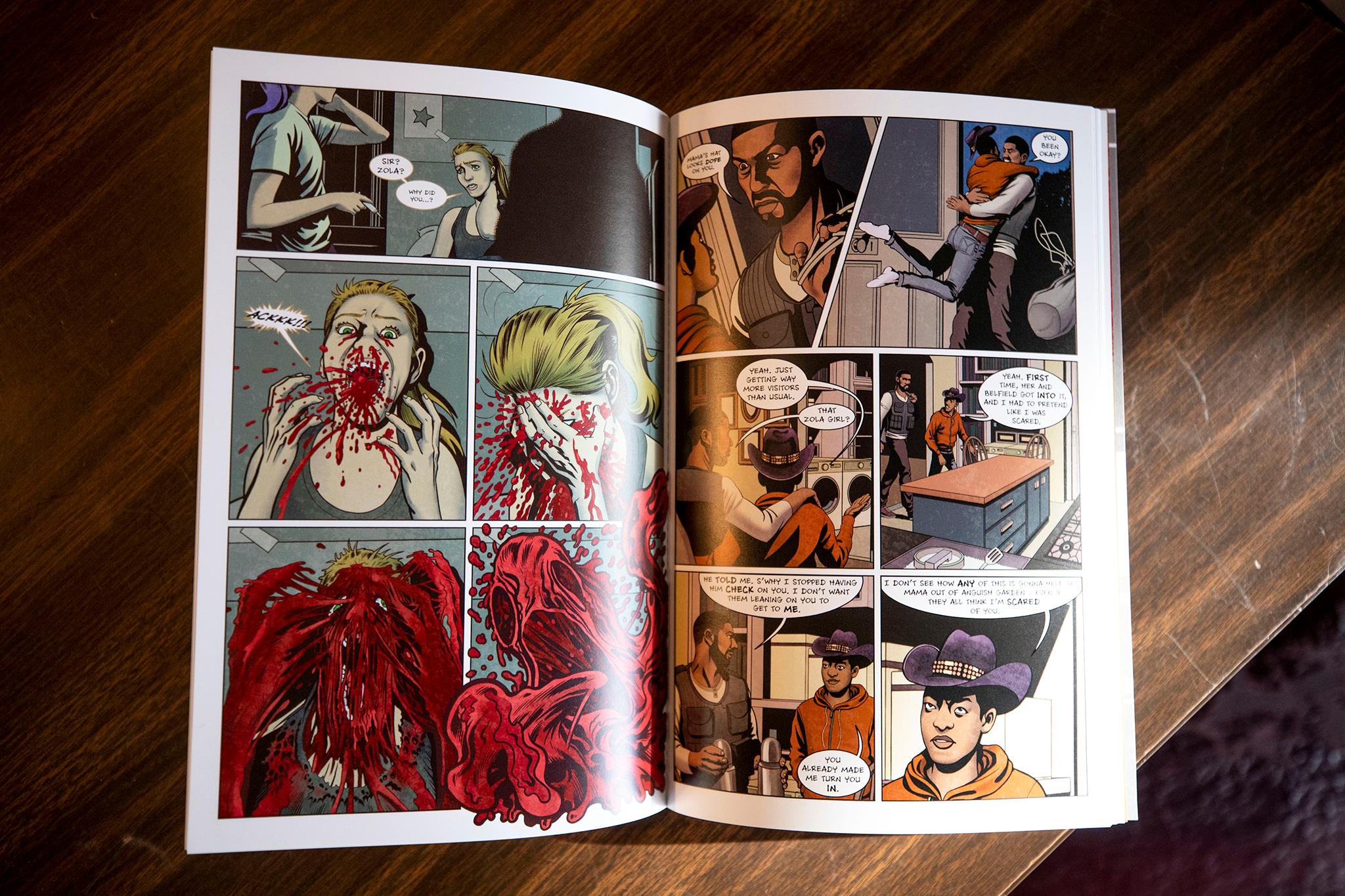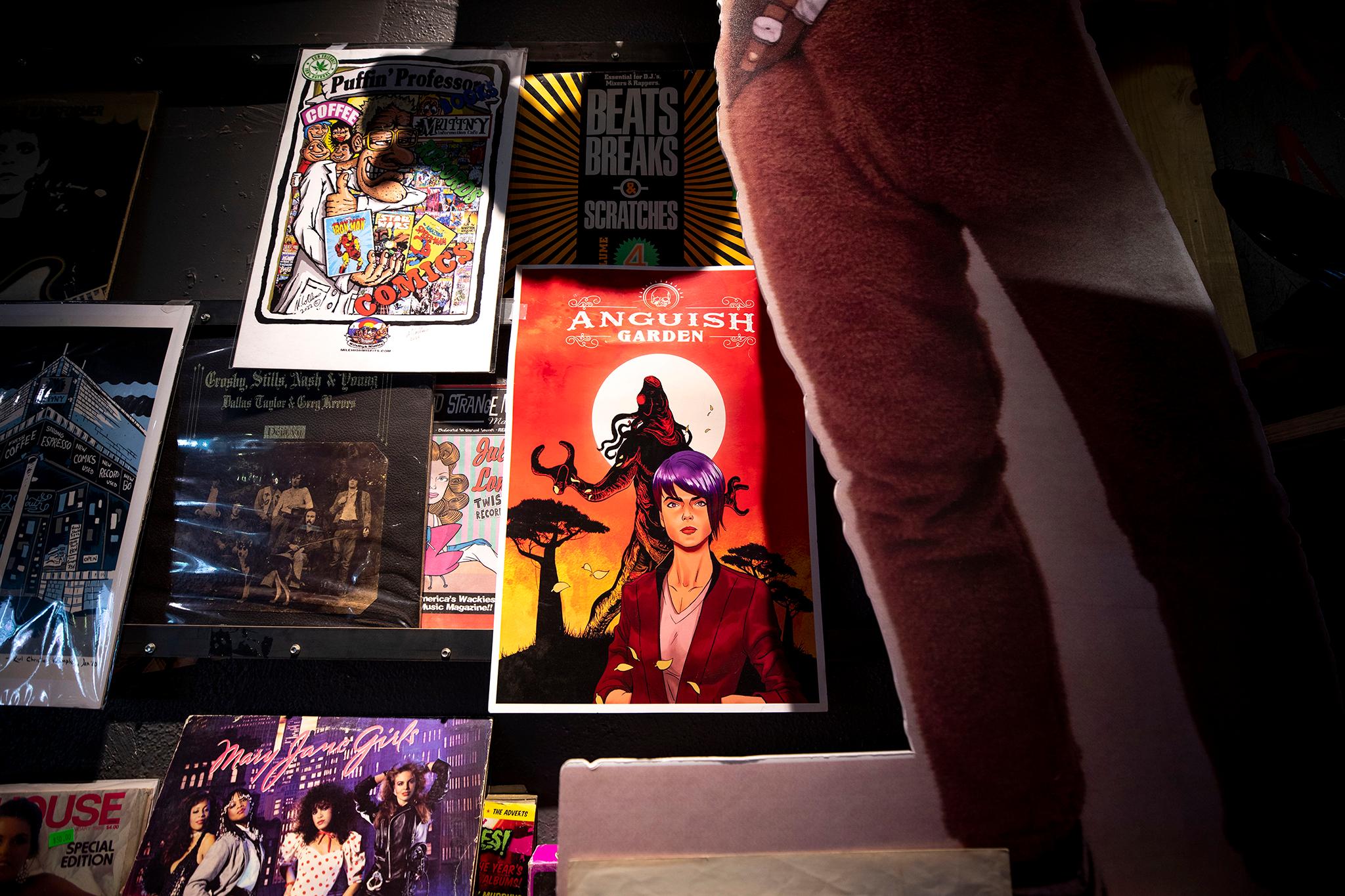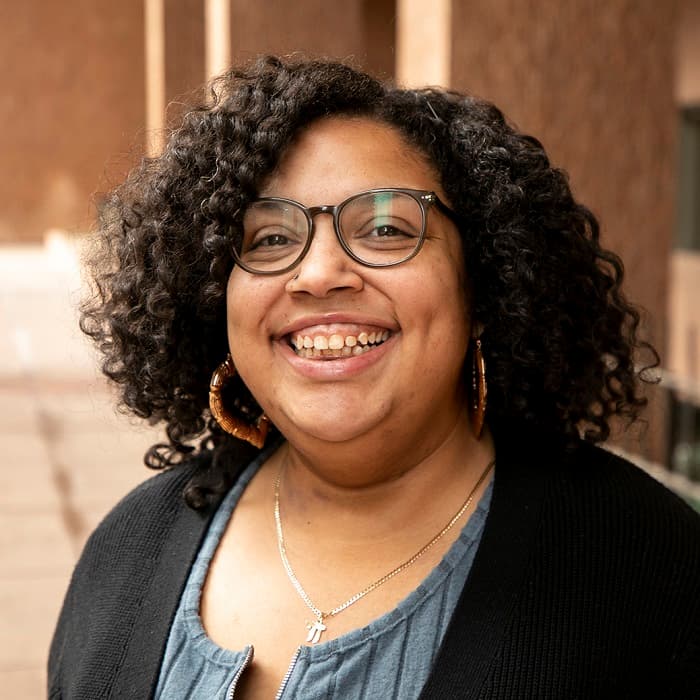What's a hero? What's a villain? These questions may seemingly have black and white answers, but it's all subjective -- especially when a character central to a story wonders which category they fall into.
It's with this kind of context that R. Alan Brooks explores real life issues through fictional and sci-fi universes in his writing.
Brooks' resume is long. He's a past musician and current comic writer for the Colorado Sun. He's also a professor who teaches graphic novel writing at Regis University and has two upcoming writing classes at Lighthouse Writers Workshop, including one on how to convey social messages through storytelling without antagonizing readers, i.e. creating context.
"When you take things out of a familiar context but still keep the truth of them in there, people are less resistant and a lot more open," Brooks said. "They can experience truth in a different way."

Brooks is also a graphic novelist, and he's going into the new year with a few accomplishments under his belt. He's featured in an Denver Arts Museum exhibit and is coming off the completion of "Anguish Garden, Book II," the sequel to his original story about an alien invasion with a western vibe and subtext about the dangers of white supremacy.
Brooks grew up in Atlanta and became a comic book fan at the behest of his father.
His dad wanted him to read more and and he got that fill through comic books. Brooks said from his youth through his 20s, he lived in comic book stores and attended conventions. Those events were vastly different then the ones held today when it came to fandom and diversity, Brooks said.
Oftentimes at conventions in the 80s, he'd be one of a few Black people in rooms of about 200-300 white people. Now the assurgency and acceptance of nerds, specifically Black nerds, has led to bigger conventions and more similar faces.
It's a beautiful thing, Brooks said, and it inspires him to continue being his authentic self. For example, you won't find anything on Black trauma in Brooks' work.

"Publishers, a lot of times, tend to think 'Black' is a genre," Brooks said. "So they want me to tell a very narrow story of Black suffering... I've approached a lot of publishers and they sort of shrugged at my stuff because they wanted me, more or less, to talk about how mean white people have been to me...All I know is the full humanity of Black people...These Black voices that are pushing to the forefront stronger ideas of the full scope of Black humanity, you know, joy, adventure, exploration, mystery, all that kind of stuff, that's what I really love to see."
It's an issue that plagues and pigeonholes Black creatives. It also limits what Black viewers are expected to watch and ultimately like, including Black crimes movies or retellings of slavery.
Brooks has been asked by publishers to create such stories and has sadly received racist death threats. But they haven't discouraged him from creating what he wants when he wants to.
Around 2017, Brooks produced his first graphic novel, "The Burning Metronome," a murder mystery with supernatural elements laced with inspiration from "The Twilight Zone."

The sci-fi show focused on the abnormal and the fantastical, but the stories always layered a moral question, and once viewers got past the absurdities, they could see examples of political and societal messages.
"There's something powerful about putting something in a different context because people get defensive," Brooks said. "It's a human thing. So, fiction is a really good way to move things away from the place where people are defensive so they can actually hear the message that you're trying to convey."
Brooks said the show, along with Donald Trump's presidency, also influenced his next graphic novel, Anguish Garden.
The novel is set in a post-war world where humans have stopped an alien invasion, but some humans believe others have been infected by the would-be invaders. Fearing that the "infected" would turn into monsters, they are rounded up and taken to a quarantine facility called Anguish Garden. But these infected humans don't show any symptoms.

Brooks' main character is essentially a bounty hunter tasked with rounding up the "infected."
She thinks she's a hero, saving the world one captured infected person at a time, but Brooks said as the story goes on, she realizes she may be a pawn in a more nefarious scheme.
It's the hero versus villain question again. It's also a contextual play on white supremacy. If the infected show no symptoms, how are they chosen?
"I thought specifically about what it means to turn other human beings into monsters and use that fear to manipulate people," Brooks said. "The idea of thinking you're the hero and turning out that you're the villain, that was also appealing to me...The difference between the hero or the villain is not what they're fighting for, it's what they're willing to do to fight for it. Once compassion is gone, then you find yourself becoming a villain even if you're fighting for a righteous cause."
With "Anguish Garden, Book II," the allegory's focus is on white supremacy groups' recruitment efforts. Brooks said the main character also starts to question whether she's still a "hero."
Anguish Garden is set to be a trilogy and will continue to address underlying racism and how hatred really can make folks blind. There's no actual white supremacy in the books, but the taint is there. And though that's the focus, Brooks said he also hopes people hear the message of how important it is to have compassion.
"I feel like the real message of these books is that you can chase after something good, but if you don't have compassion, then you're going to be doing evil things," Brooks said. "The lack of compassion makes you take shortcuts that will crush other people."

On top of completing "Anguish Garden, Book II," Brooks has also partnered with the Denver Art Museum for a second time.
The first was a comic biography on Nat Love, the legendary Black cowboy, which is still featured in the western galleries on the 7th floor of the Martin Building.
With this second collaboration, Brooks' work is the centerpiece of the "Saints, Sinners, Lovers and Fools" exhibit, which features Flemish art from the 15th to 17th centuries. Flemish work typically incorporates religious themes, so Brooks was tasked with creating a story about Balthazar, one of the three Magi who visited baby Jesus bearing gifts of gold, frankincense and myrrh.
Brooks notes that the Bible never mentions the Magi by name nor that there were three of them, but over the years, folks have filled in some of the story, leading to Balthazar, who is sometimes depicted as a Black king.
"I thought it would be interesting to explore somebody who was a king before experiencing racism," Brooks said. "Like what would be his perspective, how strange would it be that the other kings would think of themselves as being better because of something as silly as their skin. Also what would his perspective be on meeting infant Jesus...and what would his perspective be on the centuries of art that painted him as a white person."
The "Return of Balthazar" collaboration makes Brooks the only living person and Black artist featured in the exhibit.

So, what's next for Brooks? Besides the upcoming writing classes at Lighthouse, Brooks is working on entering the world of webtoons, digital comics meant to be read on a smart phone. The first episode has a tentative release date in March.
Brooks is also working on the script for a third sequel of "Breakin," a dance movie where jazz meets break dancing. Screenplays and webtoons are just another way for Brooks to put out his art, regardless of the naysayers and nonbelievers.
"I'm just going to do everything," Brooks said. "If these mainstream venues aren't going to pay attention to me...then I'm going to Master P these fools and do my own thing. They can catch up or get left...I've had enough in my life where people didn't really care about the art I was creating. So while they do, I'm just going to make everything I can all at once...and fortunately it's resonating with people."
On a random Saturday afternoon, we met up with Brooks at Mutiny Information Cafe, a spot Brooks said has supported him since day one and vice versa.
Brooks donned a Mutiny shirt. Posters of Brooks' work scattered across the shop's walls. Brooks is a familiar face in the establishment, earning greetings from co-owner Jim Norris and a few friends. Biggie, the shop's cat, was preoccupied.

Some additional questions were asked, especially regarding Brooks musical career as Soul Daddy, a name fit for an Atlanta king. The last 20 minutes was spent half praising and half bashing Marvel shows on Disney+ and the older shows from Netflix. WandaVision gets an overwhelmingly positive response. SheHulk not too much.
Talks of Luke Cage brings out recessed anger in that comic book Cage is a witty unapologetically Black man, albeit stereotypical, while Netflix's Cage may be the corniest Black man in the Marvel cinematic universe.
Once we got back to professionalism, we talked about the "Anguish Garden, Book II" release date.
There isn't one...yet but the book is done and hot off the presses. Brooks is still thinking of an official release date, so stay tuned.
"Let's say February. For Black History Month," Brooks said.













